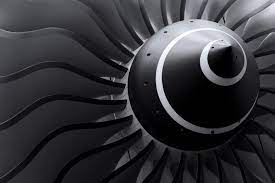Introduction
The aerospace industry has always been at the forefront of technological advancements, and the integration of 3D printing, also known as additive manufacturing, has brought about a paradigm shift in aerospace manufacturing processes. This article explores the profound impact of 3D printing on the aerospace industry, revolutionizing the way aircraft components are designed, produced, and maintained.
Rapid Prototyping and Iterative Design
One of the primary advantages of 3D printing in aerospace is the ability to rapidly prototype and iterate designs. Traditional manufacturing methods often involve time-consuming processes for creating prototypes. With 3D printing, engineers can quickly produce prototypes, allowing for faster design iterations and improvements.
Complex Geometries and Lightweight Structures
3D printing enables the creation of intricate and complex geometries that were previously challenging or impossible to achieve with traditional manufacturing methods. This capability is particularly valuable in aerospace, where lightweight structures are essential for fuel efficiency and overall performance. 3D printing allows for the production of complex, lightweight components with optimized designs.
Consolidation of Parts and Reduction in Weight
Traditional aerospace manufacturing often involves assembling multiple parts to create a single component. 3D printing allows for the consolidation of these parts into a single, integrated piece. This reduction in the number of components not only simplifies assembly processes but also contributes to weight reduction, a critical factor in enhancing aircraft efficiency.
Material Innovation and Customization
3D printing facilitates the use of advanced materials, including high-performance alloys and composites, which can withstand the demanding conditions of aerospace applications. Furthermore, the ability to precisely control the deposition of materials layer by layer allows for customization, tailoring components to specific performance requirements and optimizing material usage.
Supply Chain Efficiency and On-Demand Manufacturing
The aerospace industry often grapples with complex and global supply chains. 3D printing offers the potential for on-demand manufacturing, reducing the need for extensive inventories and minimizing lead times. This shift towards more efficient supply chain management enhances flexibility and responsiveness to changing demands.
Cost Reduction in Prototyping and Production
While the initial investment in 3D printing technology can be significant, the long-term benefits include cost reduction in both prototyping and production. The ability to manufacture complex components in a single step, reduce material waste, and optimize designs leads to overall cost savings in the aerospace manufacturing process.
Maintenance, Repair, and Overhaul (MRO) Advancements
3D printing is not limited to manufacturing new components; it also plays a crucial role in MRO activities. The ability to produce replacement parts on-demand, especially for older aircraft models with discontinued components, simplifies maintenance processes. This leads to increased efficiency in MRO operations and reduces downtime for aircraft.
Enhanced Aerodynamics and Performance
The design freedom afforded by 3D printing allows for the creation of components with improved aerodynamics. This includes the development of complex shapes and structures that contribute to better fuel efficiency and overall aircraft performance. As engineers explore novel designs enabled by 3D printing, the potential for aerodynamic enhancements becomes a significant asset.
Aerospace Innovation and Research
3D printing serves as a catalyst for innovation and research in the aerospace sector. The continuous exploration of new materials, design possibilities, and manufacturing techniques propelled by 3D printing technology contributes to the advancement of aerospace engineering. This innovation, in turn, influences the development of more efficient and sustainable aircraft.
Regulatory Considerations and Standardization
As 3D printing becomes more prevalent in aerospace manufacturing, regulatory bodies are adapting to ensure safety and compliance. Standardization efforts are underway to establish guidelines for the qualification and certification of 3D-printed aerospace components. This evolving regulatory landscape is crucial to ensuring the reliability and airworthiness of 3D-printed parts.
Conclusion
In conclusion, the impact of 3D printing on aerospace manufacturing is transformative, ushering in a new era of efficiency, flexibility, and innovation. From rapid prototyping to the production of complex, lightweight components, 3D printing has revolutionized the way aircraft are designed and manufactured. As the technology continues to evolve, its influence on the aerospace industry is poised to grow, shaping the future of aircraft development and operations.
